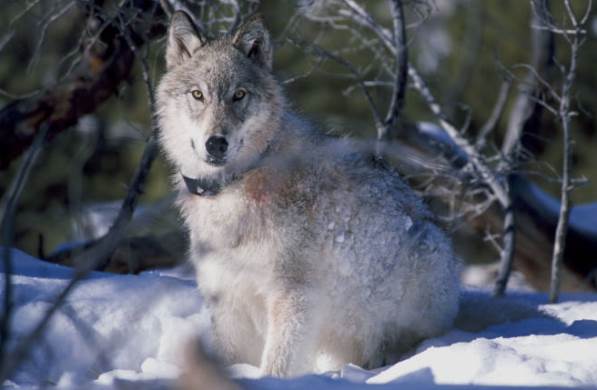Trophic ecology is the general study of the structure of feeding relationships among organisms in an ecosystem. These feeding or trophic relationships are often represented as food webs or food chains. One very important phenomenon of trophic ecology is known as a trophic cascade, which describes the indirect control that a top predator exerts on species at lower, nonadjacent trophic levels. In a trophic cascade, ecological processes and consequences initiated by a change at the top of the food chain work their way down to lower trophic levels and eventually rebalance the ecological relationships of numerous species. For example, predators can reduce the population density of their direct prey or can hinder the behavior of their prey to such an extent that they improve the survival of other species that their prey suppressed. Trophic cascades can also have the opposite effect: The removal of the top predator from a food chain can raise the population of its prey, leading in turn to reductions of species at the next lower trophic level. See also: Ecological communities; Ecological modeling; Ecology; Ecosystem; Food web; Predator-prey interactions; Trophic ecology

A notable example of this top-down ecological interaction was observed in Yellowstone National Park in the western United States. In the 1920s, the local extinction of the park's population of gray wolves (Canis lupus) through hunting caused an increase in the population of elk (Cervus elaphus), thereby leading to an overwhelming drop in the abundance of numerous plants (especially aspens, willows, and grasses) eaten by the elk. In fact, the elk reduced these plants to negligible levels. In 1995, the reintroduction of the wolves into the park started a dramatic reversal of this trend, slashing the number of elk and increasing the levels of the aforementioned plants. Moreover, the reintroduction of the wolves not only reduced the numbers of elk through predation, but also changed the elks' behavior. The elk began to congregate in areas away from the wolves and moved more quickly through territory frequented by the wolves. Because the elk did not graze as heavily on the plants in wolf territories, plant species there thrived. See also: Biological productivity; Deer; Dogs; Population ecology; Population viability; Restoration ecology
Park managers in the early part of the twentieth century had little idea of the repercussions that the extermination of the gray wolves (a top predator) would have on the ecological communities within Yellowstone. At that time, scientists thought that all trophic ecosystems were built up from the bottom. In the bottom-up scenario, plant life was the foundation upon which everything grew. After the plants became established in a region, the rest of the species making up the food chain would fall into place, starting with insects and small animals, and working up to larger herbivore consumers and then the top predators. However, naturalists' observations of trophic cascades like that caused by the wolves in Yellowstone prove that top-down effects must also be taken into consideration because their indirect influences can alter the densities of lower trophic herbivores and thereby affect the growth of primary producers (plants). Nevertheless, investigators need to learn more about trophic cascades, including how to decipher the ultimate balance of top‐down versus bottom‐up determinants. See also: Herbivory; Plant-animal interactions; Systems ecology; Theoretical ecology





